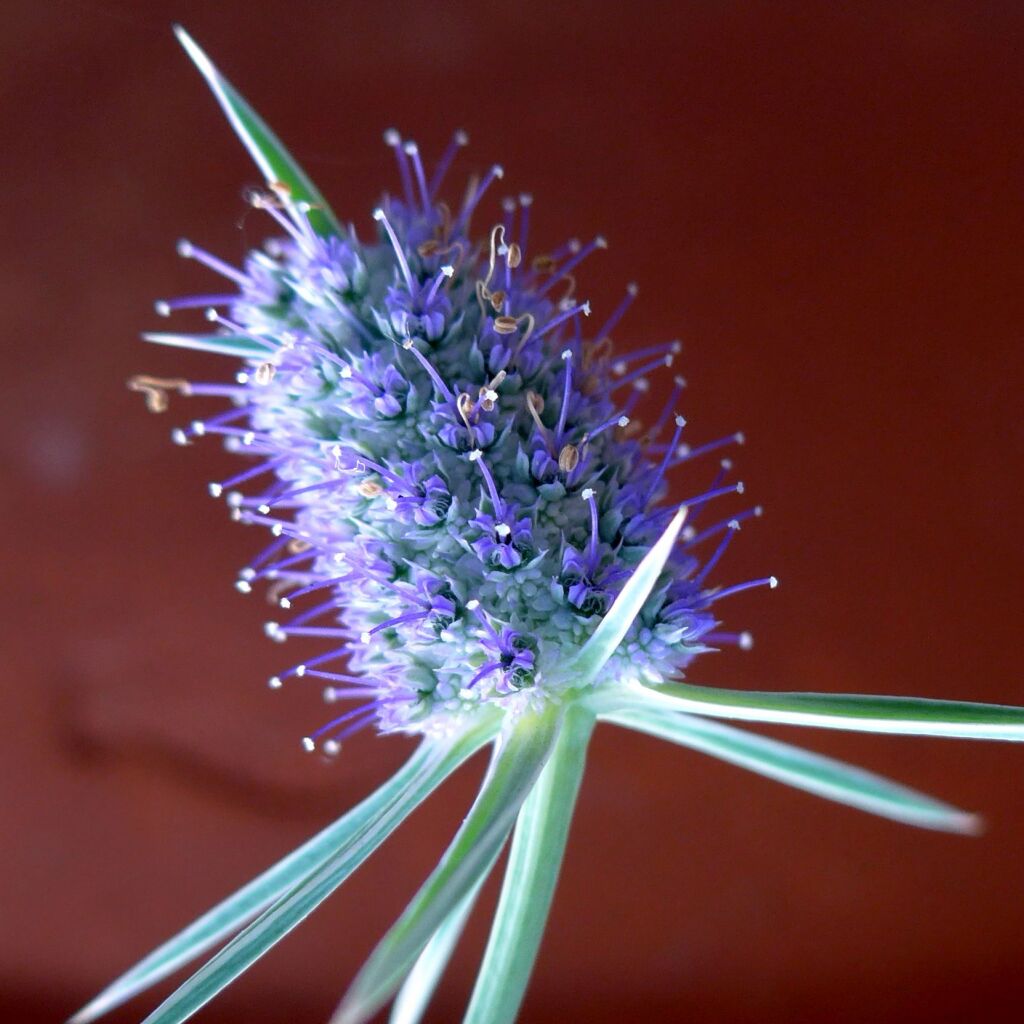Eryngium paludosum
(Moore & Betche) P.W.Michael Long EryngiumErect annual, biennial or perennial herb to 50 cm high, with short rootstock and clusters of blackish tubers. Basal leaves entire, cylindric, to 45 cm long, septate, occasionally with scattered teeth or spines on one side in the upper portion. Main flowering stem branching from a pair of opposite bracts 3–28 cm above ground level, successive bract pairs subtending further paired or whorled branches, or more commonly, a single peduncle; flowering branches to 60 cm long in all, trailing, sometimes rooting at nodes; flowering heads cylindric, mostly c. 1.5(–2) cm long, c. half as wide; bracteoles of involucre and apex often bluish-purple 12–15(–20) mm long, those subtending flowers inconspicuous, exceeding them by no more than 3 mm (often much less); petals bluish-purple, apex fimbriate. Fruit 3.5–5 mm long; vesicular scales cylindric or somewhat flattened with apices obtuse or acute-acuminate with minute teeth towards apex. Flowers Oct.–Jan.
LoM, MuM, Wim, VRiv, RobP, MuF, Gold, NIS. Also SA, Qld, NSW. Rare in Victoria, confined to heavy soils of lake margins and river floodplains in the north and north-west (e.g. Robinvale, Warracknabeal, Kerang, Numurkah districts).
Michael, P.W. (1999). Eryngium. In: Walsh, N.G.; Entwisle, T.J., Flora of Victoria Vol. 4, Cornaceae to Asteraceae, pp. 260–263. Inkata Press, Melbourne.
 Spinning
Spinning

